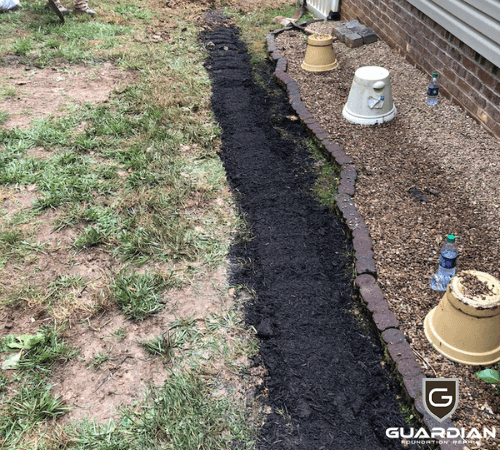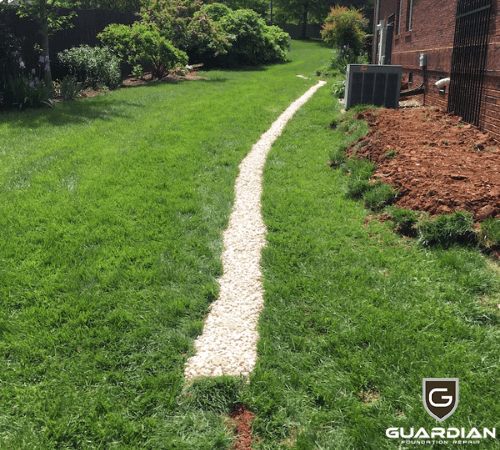Introduction:
When we plan to buy a house, the things that emerge on top of our minds may not necessarily be aesthetic. First thoughts are always practical, like if there is a ceiling leak or the water supply and drainage system are in good condition. However, there are times when we face problems with our drainage system despite taking all the measures to avoid them. When your property does not easily and quickly drain all that excess water, you may end up with foundation damage, water in your basement, or even mold and mildew.
You can prevent these issues in many ways, but French drain installation is the most common and popular method. A French drain may sound like a fancy device, but it’s just a gravel-filled trench with a perforated pipe running through it. This drain is designed to direct water away from problem areas like your foundation or basement. However, even French drains can cause problems if not correctly installed.
This article will discuss some of the most common French drain mistakes so you can avoid these pitfalls and have a well-functioning drainage system.
French Drain Installation Mistakes:
Digging without Checking:
The biggest mistake that homeowners in Knoxville make is forgetting to call 811 before they start digging. It is a free service that will come out and mark all the underground utility lines, so you don’t accidentally damage them while digging. It may seem like an obvious step, but it’s often overlooked and can result in costly repairs if you damage a line.
Additionally, other regional restrictions about water run-off or HOA regulations may further guide you on how and where you should be installing your French drain.
Not Understanding Water Flow Direction:
You get French drain systems installed to ensure water moves away from your home, through the pipe, and out into an area where it can drain properly. However, if you put the drain in the wrong spot or don’t slope it correctly, the water will flow back towards your home instead of away from it. It could end up with water pooling around your foundation, causing leaks or flooding in your basement.
The best practice before digging is to walk around your property after it rains and see where the water is flowing. You can also use a hose to simulate rainfall and see how the water moves across. It will help you understand the natural flow of water to ensure your French drain is installed in the correct spot.
Misjudging the Slope:
Proper French drain installation requires a perfect slope so the water can flow properly through the system. The steeper the slope, the faster the water will flow, and the more effective your drain will be. However, making the steep slope can cause erosion over time and damage your pipe.
Ideally, French drain pipes should have a slope of 1% or less, which means the water should drop one foot for every 100 feet of pipe. Licensed French drain system professionals best calculate this angle of descent for drainage to provide the most accurate and longest-lasting results.
Using the Wrong Kind of Gravel Base:
The right kind of French drain rock is crucial to ensure the proper functioning of the drainage system. Most people choose to use gravel because it is a cheap and easy-to-find material, but not all rock types are created equal.
You want to ensure you’re using clean round natural gravel around 1.5 inches in diameter. That will allow water to flow easily through the system without clogging up the pipe. Using pea gravel will significantly slow the water flow, and crushed rocks will eventually clog and block the pipe.
However, if the round rock is not available in your area and crushed gravel is your only option, you should use a sock or filter fabric around the pipe to keep the smaller pieces of gravel from clogging it.
Trench Not Lined with Filter Fabric:
It’s essential to line the trench with non-woven geotextile fabric to keep sediment and small dirt particles from mingling with the gravel and clogging up the pipe. This drainage fabric acts as a separator between the soil and the gravel, allowing water to flow freely through the system.
While wrapping the fabric, remember to overlap the sections by at least 12 inches to create a water-tight seal and secure both ends of the fabric with staples driven into the ground. Also, it is important to overlap in the direction of water flow to ensure nothing can get through.
By omitting this step, there is no stopping the sediment from clogging up your pipe and rendering the entire French drain installation pointless.
Missing Drainpipe:
Many homeowners choose to install French drains without a pipe, thinking the gravel will be enough to channel the water away. However, without a pipe, the water will eventually wash the gravel out, leaving you with a trench full of dirt and no way for water to flow where you want it to go.
A properly installed French drain should always have a 4 to the 6-inch drain pipe to allow a smooth flow of heavy rainwater away from your property. This piping needs to be perforated so water can seep in and be carried away through the system. Also, ensure that the holes face down to prevent water from escaping and pooling around your home.
Filling the Trench Back with the Excavated Soil:
It may seem logical after you’ve installed your French drain; however, you shouldn’t do it.
The excavated soil is most likely impacted by the weight of the machinery used to remove it and will not allow water to seep through. For your French drain to work properly, use gravel around the pipe, and place a very light layer of topsoil over the gravel before restoring your landscaping. Also, make sure that the drain is not covered by pavers, cement, or anything else that could potentially block the water from seeping in.
Routing the Downspout Directly to French Drain:
It is not uncommon to see homeowners connect their downspouts directly to the French drain to reduce pooling water around the foundation. However, it’s important to remember that French drains are limited in capacity and are not designed to handle large volumes of water simultaneously.
Pointing your downspout directly into the French drain can cause severe flooding that overwhelms the system and results in water overflowing back onto your property.
The best way to avoid this is to install a catch basin at the end of the downspout to collect the water, allow it to drain away slowly, and catch any debris that could clog the system.
Why it’s Important to Hire a Professional for Your French Drain Installation:
A French drain is a great way to protect your home from water damage, but only if installed correctly. Installing a French drain just to have it fail is a waste of time and money and can lead to even more severe water damage.
As you can see, many things can go wrong if you don’t know what you’re doing, so hiring a professional to do the job right the first time is vital.
Guardian Foundation Repair has been repairing and installing French drains for homeowners in Knoxville and the surrounding areas for years.
Our contractors are highly skilled in basement waterproofing and foundation repair and can install your French drain quickly and efficiently.
If you think you may need a French drain installed or are having issues with water in your basement, call us for a customized long-term drainage solution.


